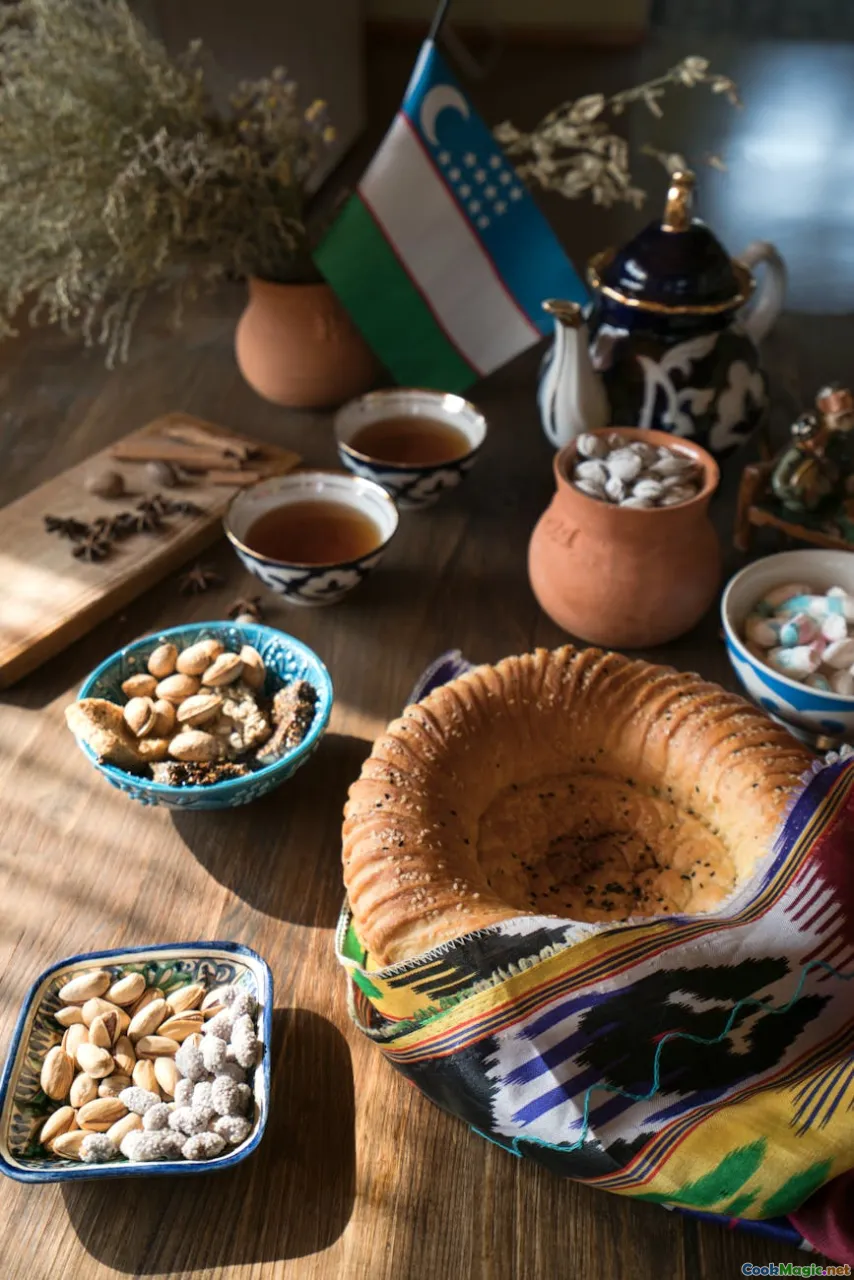Traditional Uzbek Tea Culture and Food Pairings
8 min read Discover the rich traditions of Uzbek tea culture, its social significance, and exquisite food pairings that reflect centuries of hospitality and flavor. April 26, 2025 08:55
Traditional Uzbek Tea Culture and Food Pairings
Imagine a landscape where vast steppes meet ancient cities, where history whispers through bustling bazaars and the aroma of spices drifts through the air. Within this tapestry of Central Asian life, one tradition stands out as a symbol of hospitality, community, and refined taste: the Uzbek tea ceremony. Far more than a simple beverage, tea in Uzbekistan encapsulates centuries of cultural identity, social bonds, and culinary artistry.
The Heart of Uzbek Hospitality: Tea as a Cultural Keystone
In Uzbekistan, tea is not just a drink; it is a sacred ritual woven into the fabric of daily life. From the moment dawn breaks over Samarkand’s legendary mosques to the lively evenings in Tashkent’s teahouses, serving and sharing tea signifies friendship, respect, and warmth. It’s customary for hosts to prepare a meticulously brewed pot of strong, aromatic black tea, often infused with aromatic herbs or dried fruits, reflecting local tastes and seasonal ingredients.
**Historical Roots:**Historically, tea was introduced to Central Asia through the Silk Road, arriving from China and Persia. Over centuries, it evolved from a luxury for the elite into an everyday staple accessible to all social strata. The Uzbek version of tea drinking emphasizes simplicity paired with profound cultural symbolism. Traditional utensils include a narrow-topped teapot called a samovar, which keeps the tea hot for hours, and small, handleless cups called piala, designed for multiple refills and social interaction.The Ritual of Tea: The process begins with boiling water, often over a charcoal stove, creating an inviting, crackling ambiance. The strong black tea leaves are steeped patiently, their fragrance filling the room with hints of smoky, fruity, or spicy undertones, depending on the blend. The tea is then poured into small cups, sometimes diluted with a splash of hot water to suit individual preferences.
The Social Significance of Tea in Uzbek Society
In Uzbekistan, inviting someone for tea is akin to opening one’s home and heart. It’s an act of friendship, a sign of respect, and a way to forge bonds. Tea gatherings can be as informal as neighbors sharing a quick cup on the street or as elaborate as family celebrations lasting hours.
**Tea and Conversation:**The ritual is often accompanied by lively conversations, storytelling, and music. It’s common to serve sweet treats like baklava, shekerbura, or chorek alongside tea, enhancing the sensory experience.Ceremonial Occasions: During weddings, religious festivals, or visitors’ arrival, the tea ceremony takes on a more elaborate form, sometimes involving multiple rounds and special accompaniments. The act of pouring and refilling the cups becomes a dance of hospitality, symbolizing generosity and unity.
Food Pairings: A Symphony of Flavors
The culinary richness of Uzbekistan complements its tea tradition perfectly. Each dish is thoughtfully paired to enhance the flavors of the tea, creating a harmonious balance that tantalizes the palate.
Traditional Snacks and Pastries
- Shekerbura: A delicate, crescent-shaped pastry filled with ground almonds or pistachios, sweetened with honey or sugar. Its nutty aroma and flaky texture pair beautifully with the robust, tannic notes of black tea.
- Chak-chak: A honey-glazed, crispy dough dessert that adds a sweet, sticky contrast to the bitter depth of tea.
- Baklava: Rich layers of filo dough, nuts, and honey, offering a luscious sweetness that complements the strong brew.
Savory Appetizers
- Mastava: A hearty, spiced rice and meat stew that balances the freshness of tea with its savory richness.
- Samsa: Pastries filled with minced lamb or beef, seasoned with onions and herbs, often baked in tandoors, serve as a satisfying accompaniment.
Seasonal and Regional Variations
In summer months, fresh fruits like apricots, melons, and cherries are served alongside cool herbal infusions, providing a refreshing contrast. Winters may feature dried fruits and nuts, emphasizing warmth and comfort.
Personal Insights and Anecdotes
Having traveled through Uzbekistan, I was struck by the reverence with which tea is prepared and enjoyed. In a small teahouse in Bukhara, the owner meticulously prepared a pot of chai, explaining each step with pride. As we sipped the steaming brew, bowls of dried apricots and pistachios were passed around, laughter echoing amidst the aromatic haze.
One memorable afternoon was spent in a rural village where elders gathered under a shaded tree, sharing stories over steaming cups. The simplicity of the moment — tea, bread, and heartfelt conversation — encapsulated the essence of Uzbek hospitality.
Preserving Traditions in a Modern World
Today, urbanization and globalization influence Uzbek tea culture, yet the core values remain steadfast. Modern teahouses blend traditional elements with contemporary styles, and new variations of tea infusions incorporate local herbs like za’faran (saffron) or khodjap (a local spice blend).
However, the essence of sharing a warm cup, the ritual of pouring, and the joy of food pairings continue to connect generations. This living tradition exemplifies how food and beverage serve as vessels of cultural identity and social cohesion.
Conclusion
In Uzbekistan, tea is much more than a beverage; it is a vessel of history, a symbol of generosity, and a cornerstone of social life. Paired with an array of flavorful snacks and hearty dishes, it creates a multisensory experience that embodies the warmth and richness of Uzbek culture. Whether savored in a bustling city teahouse or a quiet rural home, the tradition of Uzbek tea invites us to slow down, connect, and celebrate life’s simple pleasures.
So next time you pour a cup of tea, remember the centuries of tradition steeped within each sip — a tradition that continues to unite people across borders and generations in the timeless dance of hospitality and flavor.









